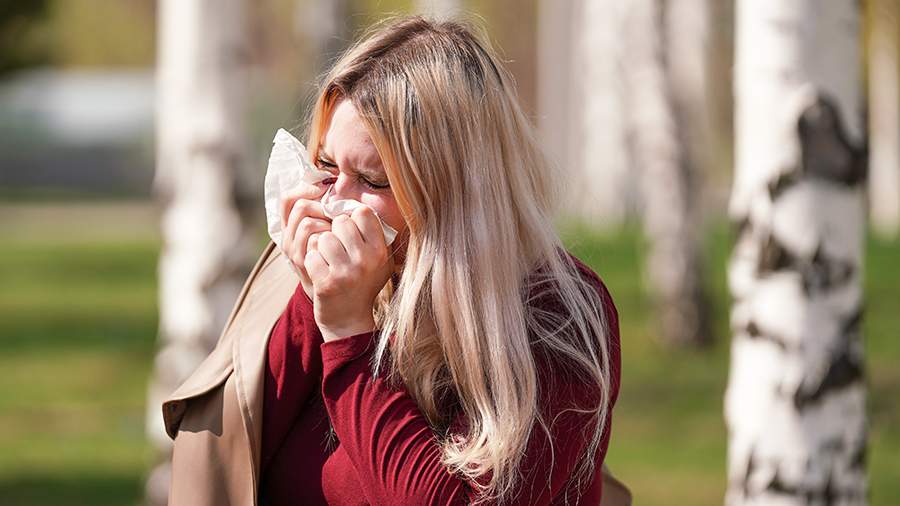The doctor told about allergy-causing blooms in May and June

Stuffy nose, watery eyes, and cough — more than 15% of Russian residents experience unpleasant symptoms of hay fever every spring. The peak of allergy exacerbations occurs in May-June. On May 16, Alexandra Fileva, an expert at the Hemotest laboratory, told Izvestia which plants bloom and disperse pollen at this time and how to alleviate allergy symptoms.
In May and June, allergies are mainly caused by trees, cereals and weeds. One of the most aggressive allergens is birch, which begins to bloom from the middle to the end of April and ends by the end of May. In addition, oak, ash, poplar, maple, willow, and hawthorn spoil the lives of allergy sufferers. In the middle and end of May, pine and spruce trees begin to gather dust. In late spring and early summer, meadow bluegrass, fescue, and dandelion begin to bloom.
"The composition of such an allergic bouquet depends on the region in which a person lives. In the south and central regions of the country, plants begin to bloom earlier than in the north or the Far East. For example, in certain regions, alder and hazel are the main allergens, while in other areas they hardly grow, so if an allergic reaction is suspected, it is recommended to study information about allergens specific to this region," the doctor noted.
She explained that allergy to plants can occur at any age. This can be facilitated by a temporary weakening of the immune system, severe stress, environmental pollution, or moving to another region.
"Its external manifestations often resemble the symptoms of other diseases — acute respiratory viral infections, conjunctivitis, and dermatitis. In more rare cases, with allergies, the stomach begins to ache, the digestive system is disrupted, and the person feels tired and exhausted. If an allergy develops in adulthood, it is often mistaken for a cold or bronchitis and treated incorrectly," warned Fileva.
Meanwhile, the doctor clarified, such a reaction of the immune system must be monitored, as it not only reduces the quality of life, but can also lead to the development of bronchial asthma, anaphylactic shock and other complications.
According to the expert, you should start preparing for the flowering season in advance. It is necessary to visit an allergist, accurately identify dangerous allergens with the help of laboratory tests, and start taking antihistamines. Allergen-specific immunotherapy (ASIT) is used for systemic treatment and reduction of allergy symptoms.
"During active flowering, it is worth closing windows, especially in strong winds, and using air purifiers if possible. After walking, it is recommended to take a shower to wash off pollen from hair and skin, rinse your nose with saline solution, and use nasal sprays recommended by your doctor that reduce swelling of the mucous membrane," the expert added.
Earlier, on May 6, Alexandra Gornak, an allergist and immunologist at the Sberbank Health medical company, said that pollen allergy can develop at any age. It most often occurs in childhood or adolescence, but it can occur for the first time in an adult.
Переведено сервисом «Яндекс Переводчик»

